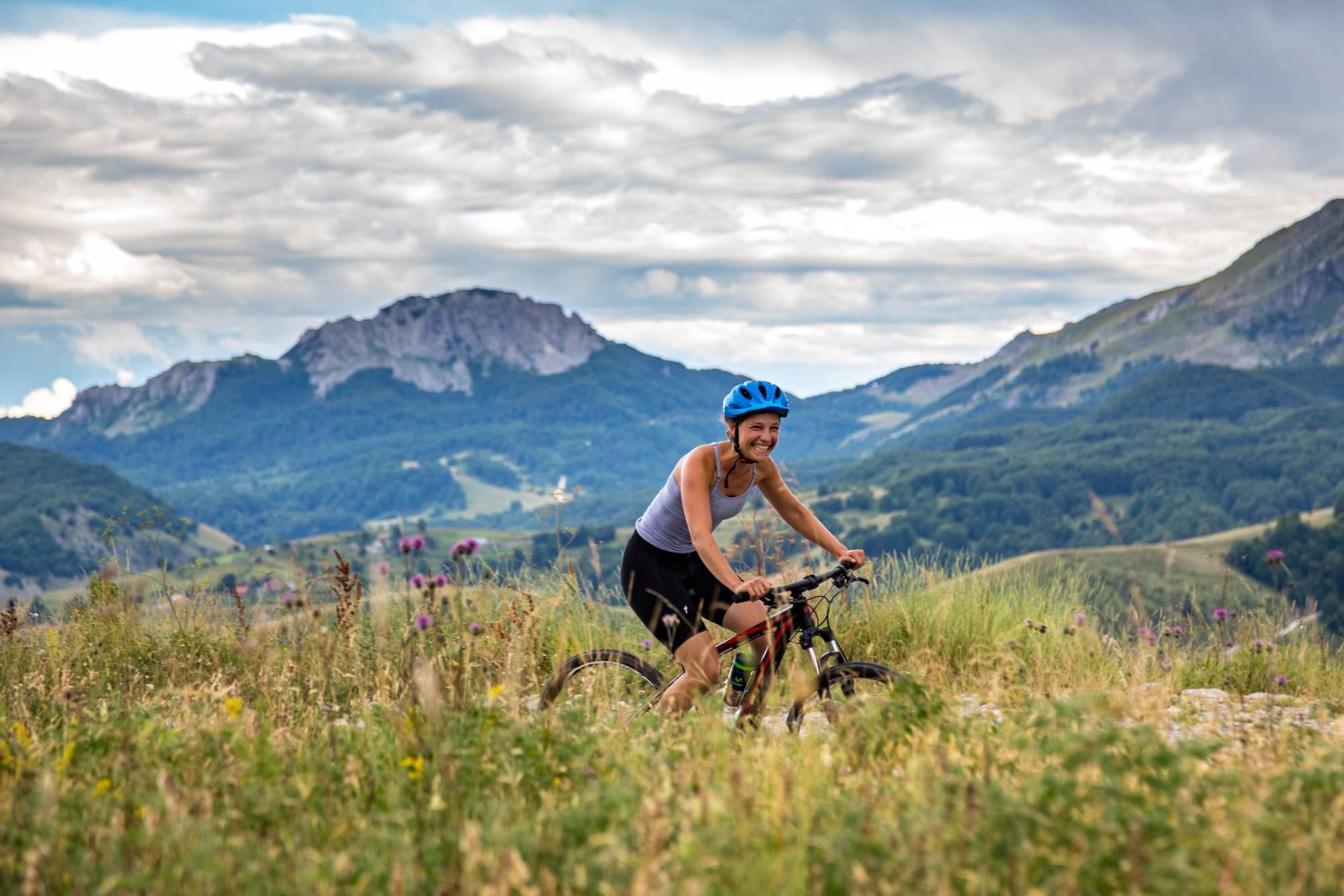The Ćiro Trail is a scenic 98-mile (157km) cycle route between the famous cities of Mostar in southern Bosnia and Herzegovina, famous for its arched Ottoman bridge, and Dubrovnik, the ancient fortified city on the Croatian coast. The route follows the path of an abandoned narrow-gauge railway line which has been transformed in recent years and re-opened as one of Europe's finest cycling paths - passing vineyards, rivers and mountains.
What were once rural train lines became asphalt cycle paths with dreamy views.
“It comes from the time when the Austro-Hungarian Empire expanded into Bosnia and Herzegovina, in the 1800s,” says Thierry Joubert, an expert on adventure travel in the Balkans. “They set out to create railway lines through Bosnia for the extraction of wood and other resources.”
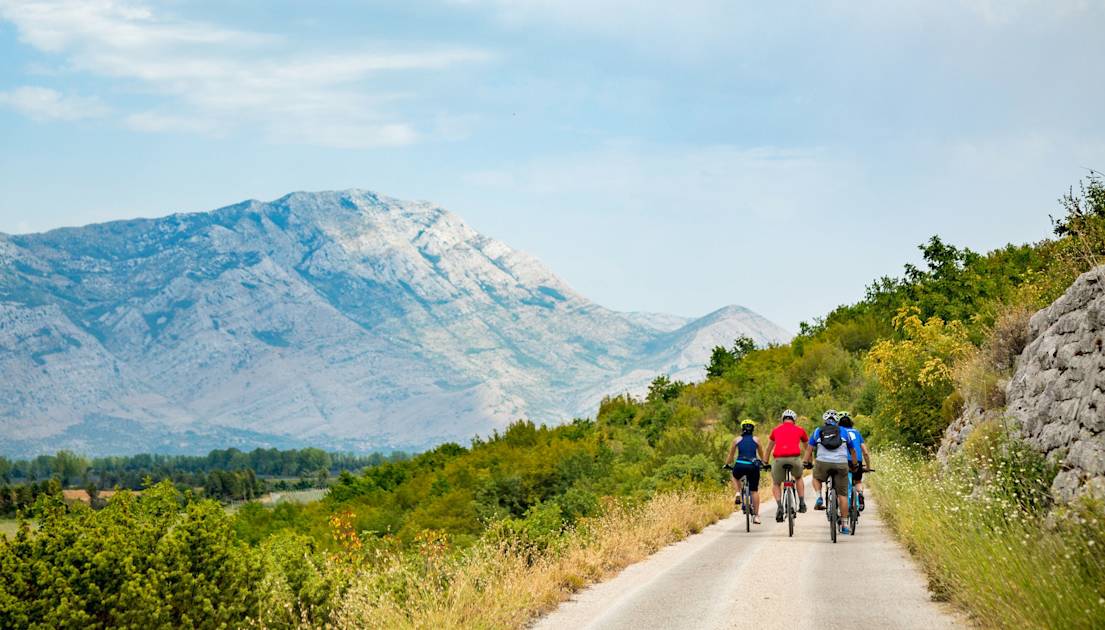
The first section of the railway, from Metković to Mostar, began service on 13 June, 1885. By 1901, it ran all the way to Dubrovnik - connecting countries, people and cultures. Ćiro was the name for the narrow-gauge trains on the line.
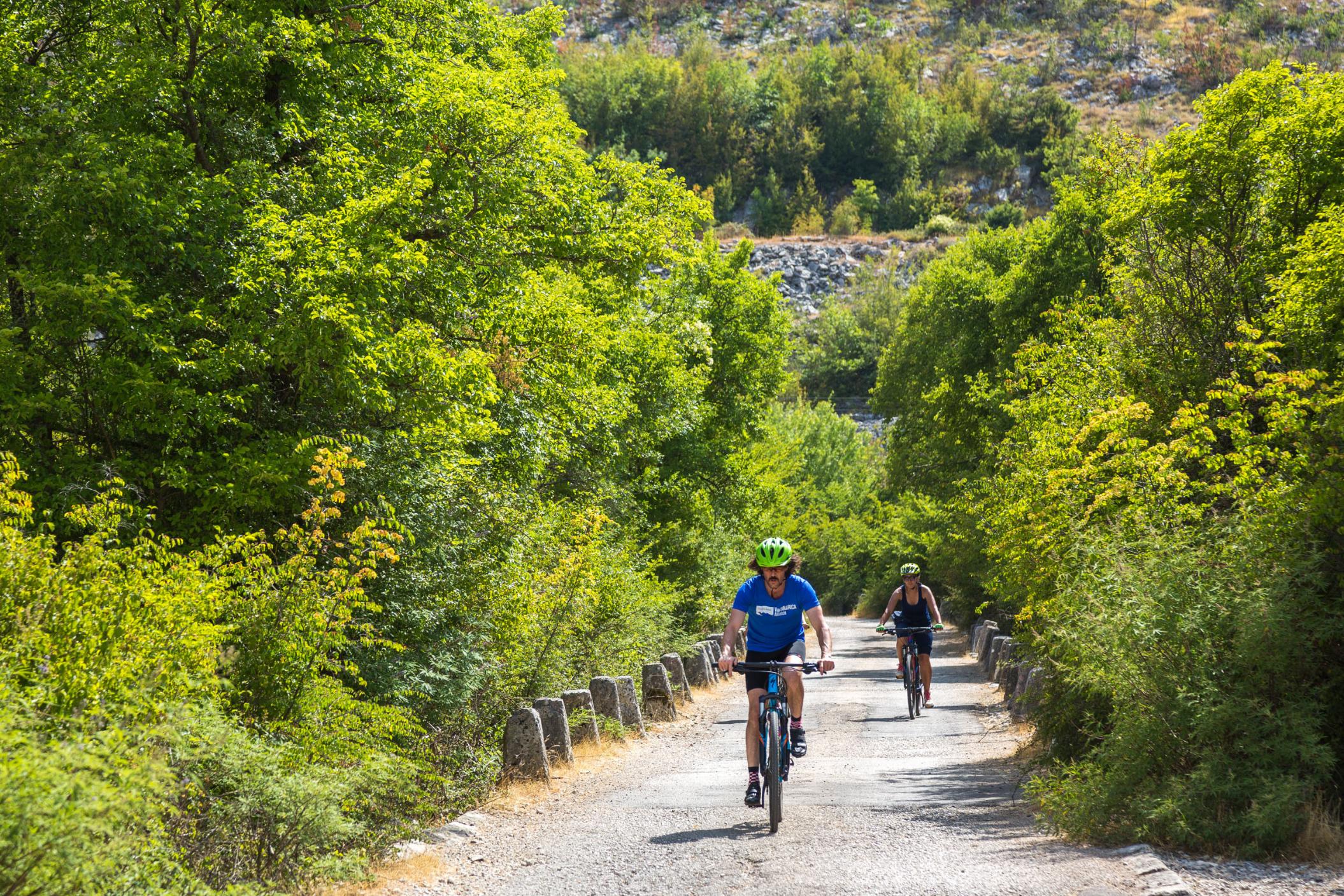
These railways were lifelines for local people who were previously isolated from the major cities. The train created new jobs and opportunities, and allowed local produce like fresh fruits and fish, as well as newspapers, to reach rural areas.
“With Yugoslavia, it expanded further and it was used until the middle of the 1970s,” Thierry continues. “Then Tito and the Communists decided that this wasn't the way to go anymore, and the railway lines were abandoned. They've kind of been lying there dormant ever since. People would strip stuff from it. First went the steel, then some of the bridges came down. When that happened, the communities along the line were cut off and lost those benefits too.”
The incline on the railroad couldn’t be more than 4% for the trains to run. That’s great for cycling.
In the years after the Bosnian War, in the early 90s, the country saw a rapid resurgence as a tourism destination - and it was then the rails were revisited.
“The regional development agency in Herzegovina - local guys around Mostar - they saw this as an opportunity to redevelop; to take back the railroads for cycling,” says Thierry. “You couldn’t really cycle it at first. The bridges had been taken down and tunnels had collapsed. This project created a cycleable gravel and asphalt route. And they restored some stations along the way.”
What were once rural train lines became asphalt cycle paths with dreamy views.
“The interesting thing is that these were old trains, so the incline on the railroad couldn’t be more than 4% for the trains to run. That’s great for cycling. It takes you through protected areas and past isolated villages. The main asphalt roads in Bosnia are busy or really steep, but these routes are quiet, and accessible. You’re not on the main routes, so you see less people. And they happen to be in really beautiful areas - areas with monasteries, bird reserves, caves.”
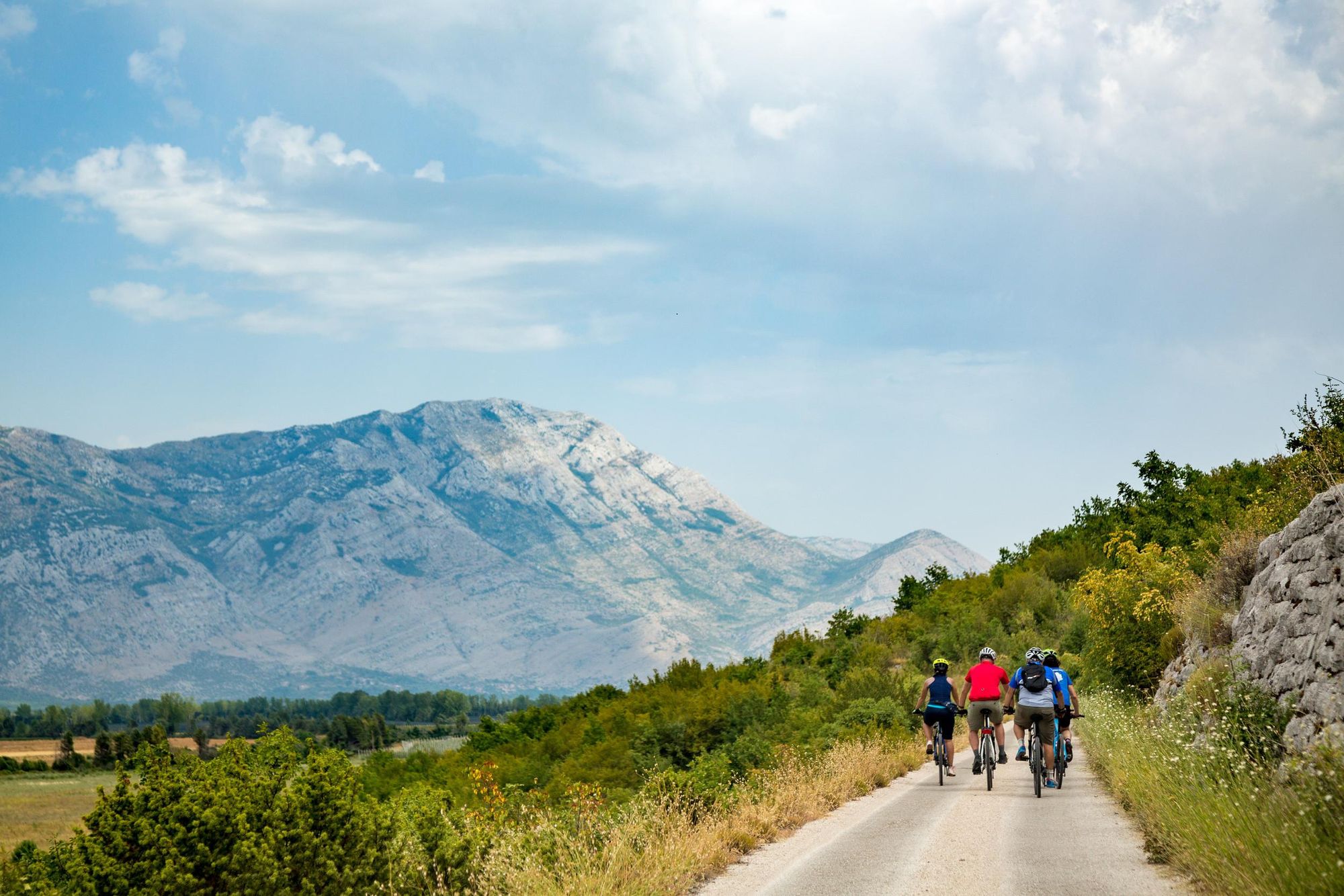
The Ćiro Trail became a full development project, with EU funding. “The team at Herzegovina Bike worked to develop the trail, and get cyclists, but also to get local people to start seeing cyclists as a worthwhile investment,” Thierry says.
Between Two UNESCO Wonders
It helps, of course, that the core route runs between two of the Balkans and Europe's great cities - Dubrovnik in Croatia, with its cliffs, Adriatic access and medieval architecture, and Mostar, the Bosnian town, famed for its Ottoman era bridge, the pointed, UNESCO-protected Stari Most, on the Neretva River.

There are actually several seperate routes under the umbrella of the Ćiro project today (including an extension to Sarajevo that we'll touch on later), but there is one key route that began it all. “The main section is from Mostar to Dubrovnik,” Thierry explains. “That’s the oldest section. It's very nice to cycle. It's very doable. It can still be challenging in the interims in Bosnia to find accommodation; some places are a little isolated; but the cycling is doable for everyone.”
I ask Joubert to talk me through this core route.
“In Mostar, you have these different cultures coming together, and a continental climate,” he says. “The mountains are around, and Mostar is very much Mediterranean, but still Ottoman at the same time. It’s hot here! The Ćiro Trail helps you out there, because you cycle out of Mostar along the Neretva river.”

Early on, you’ll pass the Blagaj Tekija Monastery, a 16th-century Ottoman-era Dervish monastery, built into the cliffs, and later, you’ll come to vineyards and farmlands, tracing the Neretva River Valley as you head towards Čapljina, a city known for the serene Kravice Waterfalls.
“After Čapljina, you’re just gone,” Thierry says. “There’s nothing - it’s just nature.”
You’ll ride the winemaking roads of Herzegovina, continuing towards Zavala.
You cycle out of Mostar along the Neretva river.
“There are vineyards the whole way from Mostar east towards Dubrovnik,” Thierry says. “In the former Yugoslavia you had big French-style vineyards. Nowadays these are family-owned, boutique, smaller vineyards. That makes it interesting. You have families; entrepreneurs, young people trying it out.
“You've got monasteries with vineyards, where you can do a wine-tasting. And you have people and small communities who bring their wine to Zavala - where you can try local food and the local wine. It's kind of a collection point for wines from the region. You can try grapes and wine made from grapes that are authentic here, and that you won't find anywhere else. So it's the Žilavka (a white wine grape) and the Blatina (a red wine grape) - they are just here. They are not in Montenegro, they're not in Croatia, this is where you find it. And then there are some more regional grapes as well. They’re now really starting to be recognised.”

In Zavala, you can also visit Vjetrenica Cave, the largest cave in Bosnia and home to the world’s best subterranean biodiversity. More than 200 different species have been recorded there. From here, the Ćiro Trail winds to Dubrovnik, though owing to the steep, challenging terrain of this final stretch (and the logistics of the border crossing) guided tours - including our new Cycle the Backroads of Bosnia tour - often finish in Zavala, allowing you to celebrate in wine country before transferring to the Croatian city (via Trebinje, on the Trebišnjica River).
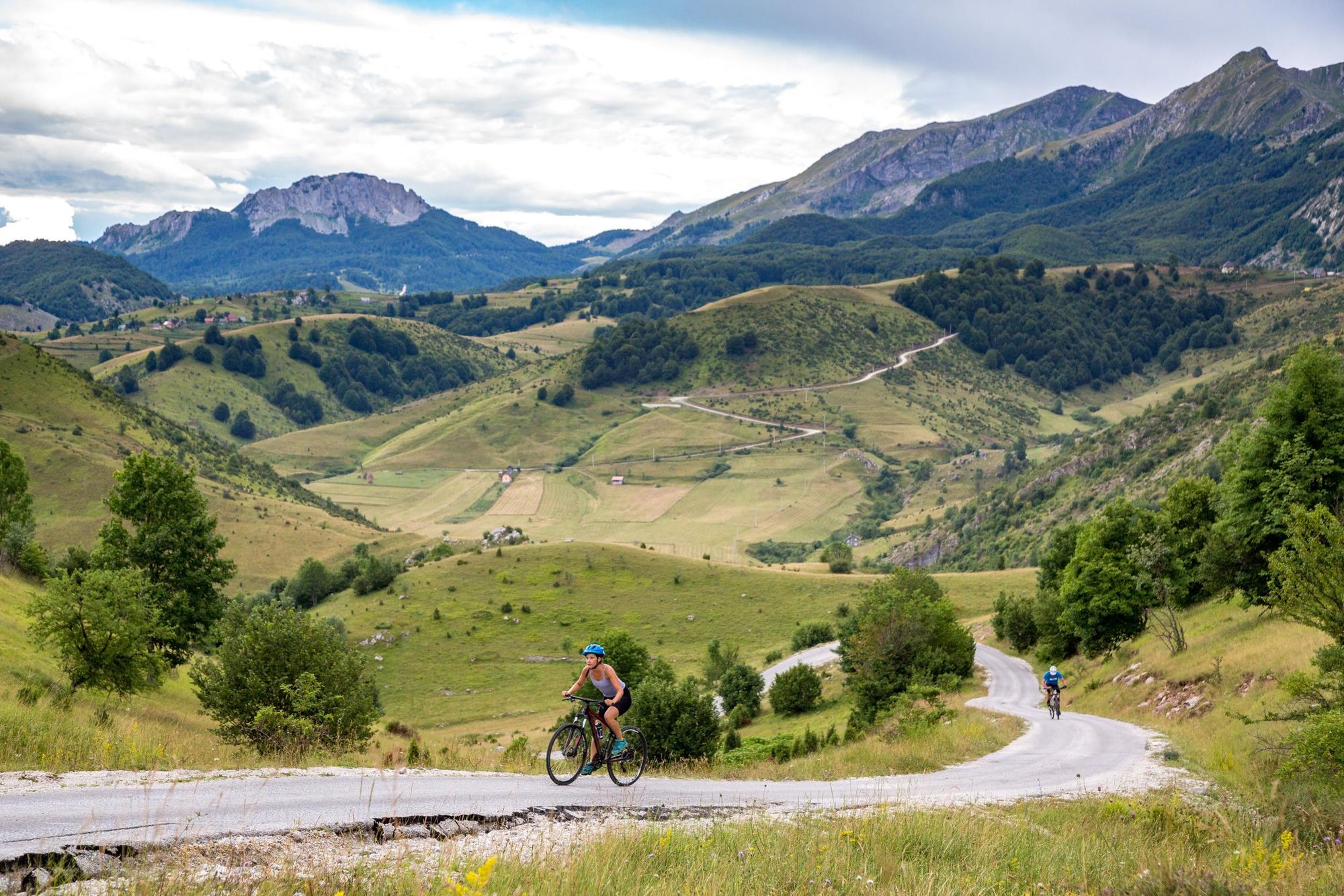
“They’re still slowly expanding the route even now,” Joubert says, explaining the route is also now connected in the other direction - all the way to Sarajevo. This means that you can start a ride in the storied Bosnian capital, one of the great cities in European history, and ride all the way to Mostar, then on to Dubrovnik - though unlike the original Ćiro, there are some demanding ascents on the way.
Minarets and Mountains
“Sarajevo is already east meets west - already really different - but then you get into the mountains in just 10 or 15 minutes,” says Thierry. “The trail goes through the Igman and Bjelasnica mountains. It's also the war route that connected Sarajevo with the outside world, through the last war. So, it's a nice thing to experience this and to put things in perspective after you’ve been learning about the war in the city. Now you’re cycling out and you put it into context.
The trail goes through the Igman and Bjelasnica mountains. It's also the war route that connected Sarajevo with the outside world, through the last war.
“You have a two-hour climb up, and then you come over the first mountain, into the Olympic venue. That's another story - the 1984 Winter Olympics - and you see the infrastructure; some of which was destroyed and some of which is still there.
"It's a stark change. You go behind the ski resort, and you have this succession of quick steps. Behind that mountain it's just open country - all the way to Mostar.

“There are some villages and local communities along the way - island villages, which basically didn't even have a road and now, tourism is kind of changing things. You can now stay there and there is accommodation along the way. We didn't have that before, you see. We're talking about peaks of 2,000m around you. Long valleys, deep canyons - the Rakitnica Canyon - great climbs and fast descents, on a lot of good, quiet asphalt roads, punctuated by gravel paths.”
There are so many communities and villages on the Ćiro Trail. And they are either isolated or people are leaving. It's happening across Europe - and this is a way of getting people back.
The route passes through mountain range after mountain range. “You've got Igman, you've got the Bjelasnica, you've got Visocica, and then you race down to the Neretva River,” Thierry says. “And all of these places along the way are also punctured by these UNESCO-protected medieval tombstones; stećci, and you see that Bosnia existed in the medieval times as a Christian Kingdom; then it was a succession of people moving around, and of conquerors.

“You have to go over Prenj, which we call the Herzegovina Himalayas, and then all of a sudden you dip down to Mostar - a very fast descent. It is very busy in Mostar in July and August, but from May to June or in September and October you’re avoiding peak season, and also it will be a lot less hot.”
The Ćiro Trail itself, Thierry says, is a very effective way of distributing tourism.

“There are so many communities and villages on the Ćiro Trail. And they are either isolated or people are leaving. It's happening across Europe - and this is a way of getting people back. It's a way to show the benefits of slow travel and how it can be very beneficial for both the traveller, and communities, and eventually, how it can be another source of income. Some of these places, they're just empty. People have left. But this is a way that people can go: okay, we could do something here. I can actually be here, and sustain myself and my family.”
The story of this great route, from the mountains of Sarajevo to the Mostar bridge and on to Dubrovnik beyond, is still being written by adventurers today.
Inspired? Cycle the backroads of Bosnia and the Ćiro Trail in 2026!

